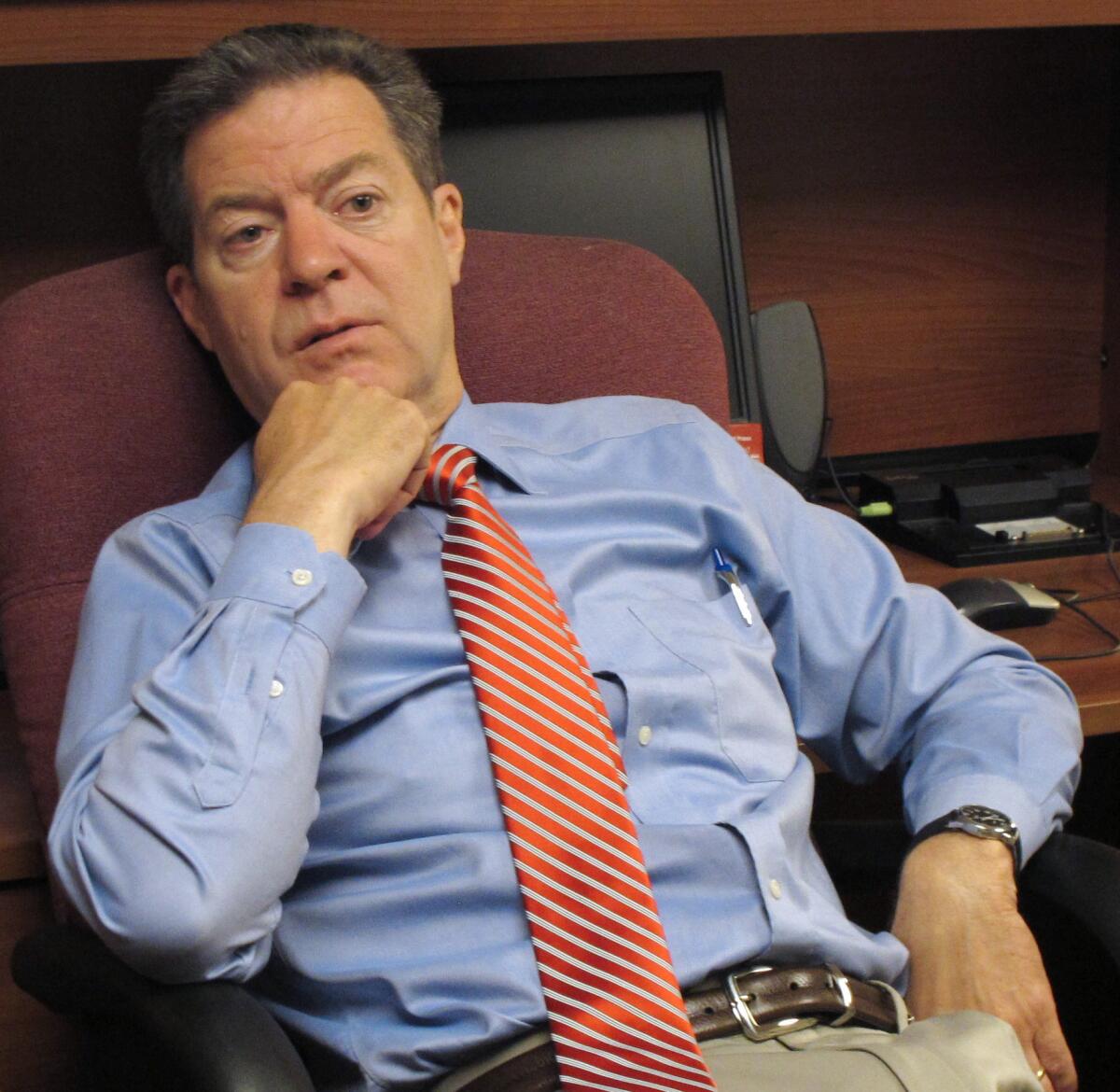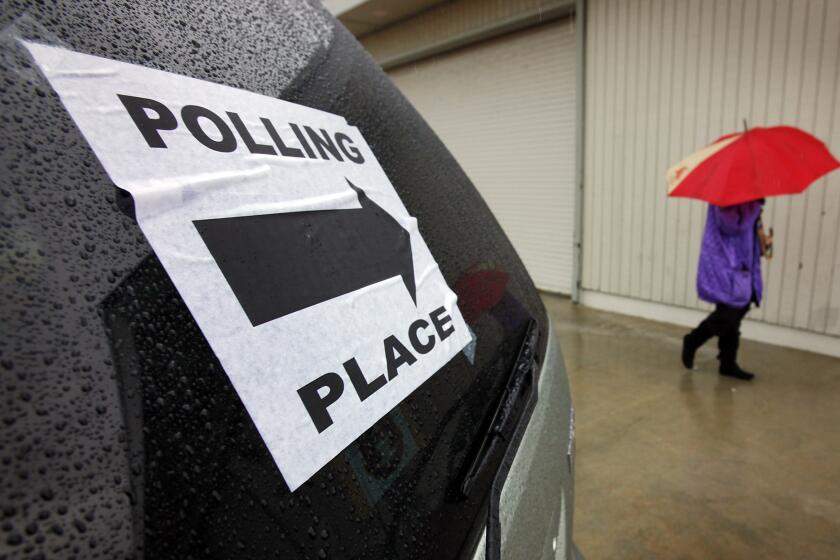Side-by-side, Kansas and Colorado governors offer test of strategies

Kansas Gov. Sam Brownback has adopted a confrontational approach during his first term and now finds his re-election chances endangered.
Reporting from Topeka, Kansas — For two next-door neighbors, Kansas and Colorado have awfully little in common.
Kansas is distinctly Midwestern, the spare flatness of the prairie relieved only occasionally by a small town or lonely farmhouse, the shrinking population mostly white, aging and politically conservative. People here still nod and smile at strangers they pass on the sidewalk.
Colorado faces squarely West, its outdoorsy lifestyle beckoning the fit and fleece-vested to abandon Denver’s office towers and escape the crowded freeways into the Rockies. A burgeoning Latino population has helped shade the state from politically red to purplish blue. You can legally enjoy your favorite microbrew and preferred cannabis.
Side-by-side, the states offer an equally stark political contrast: between an unswerving activist Republican, Kansas Gov. Sam Brownback, and a seemingly chastened, managerial-minded Democrat, Colorado Gov. John Hickenlooper. They differ not just in philosophy but, up for reelection in November, their way of facing voters’ judgment.
In Kansas, Brownback has steered the state far to the right and kept his foot pressing hard on the accelerator.
He pushed through Topeka the largest income tax cut in state history, made Kansas’s tough anti-abortion laws even tougher, ended teacher tenure, expanded gun rights, cut thousands of government jobs and eliminated arts funding—a relatively small gesture in dollars and cents but a strong statement of his limited-government vision.
When Republicans didn’t go far enough, Brownback took the unprecedented step of campaigning against several moderate lawmakers of his own party, replacing them with legislators more tailored to his conservative mold.
The results have been controversial, to say the least. Moody’s Investor Service has downgraded Kansas’ bond rating as revenues plunged and the state dipped into its rapidly dwindling reserves.
Brownback’s poll numbers have tanked.
On top of that, more than 100 GOP lawmakers, past and present, have defected to Brownback’s Democratic challenger, House Minority Leader Paul Davis, who seems to have at least an even chance of winning in November in this deeply red state.
Brownback, who was elected governor in 2010 after two U.S. Senate terms, is nonetheless serene. Asked about second thoughts or regrets, he named only one, wishing he received better, fairer — by his estimation — coverage in the Kansas media.
He insisted that big tax cuts will eventually lead to an explosion in job creation and population growth, rewarding his patience and vindicating his strategy to reverse what has been a steady, decades-long exodus from rural Kansas. “These things take time to mature,” Brownback said in a recent interview, promising more of the same assertive conservatism if reelected in November.
“I don’t know anybody who hires a new coach or CEO and says, ‘Go ahead and keep managing the slow decline. Just don’t make it hurt too much,” Brownback said. “They hire someone to get it going the right way and that’s what we’re doing.”
By contrast, Hickenlooper has tapped the brakes in Colorado after a legislative session that propelled the state too far left, too fast for the political comfort of even some fellow Democrats.
The laid-back former brew pub owner and Denver mayor could hardly be more different from Brownback; no one would ever mistake him for a firebrand or political ideologue.
But Hickenlooper went along after Democrats seized control of the legislature in 2012 and set off on a liberal spree, fulfilling years of pent-up desire. They stiffened gun laws, boosted organized labor, legalized gay civil unions, imposed new green-energy requirements, granted in-state tuition and driver’s licenses for immigrants in the country illegally, and proposed a $950-million tax hike to pay for education reform.
The latter was overwhelmingly rejected by Colorado voters in November, not too long after a pair of Democratic lawmakers—one of them the president of the state Senate--were ousted for supporting the new gun laws. A third Democratic legislator quit rather than face a similar recall.
The message was obviously received at the state capital: This year’s legislative session saw nothing like the far-reaching measures passed in 2013. And Hickenlooper has seemed much more like the moderate Democrat voters thought they elected in 2010.
Long friendly to the oil and gas industry--Hickenlooper is a former geologist--he came out against a pair of liberal-backed ballot measures to ban fracking. He promised to listen more closely to the concerns of unhappy rural residents. He second-guessed the gun legislation he signed into law -- “if we’d known that it was going to divide the state so intensely, we probably would have thought about it twice” — though he later restated his support for banning high-capacity magazines.
Two states, two different political approaches: Brownback’s confrontational conservatism vs. Hickenlooper’s conciliatory centrism.
Of the two, Hickenlooper appears the better positioned to win--he faces a challenge from former Republican Rep. Bob Beauprez--though both could be reelected in November.
If so, the distance between next-door neighbors is likely to grow even greater.
If you care to, follow @markzbarabak for more political news and analysis
More to Read
Sign up for Essential California
The most important California stories and recommendations in your inbox every morning.
You may occasionally receive promotional content from the Los Angeles Times.











